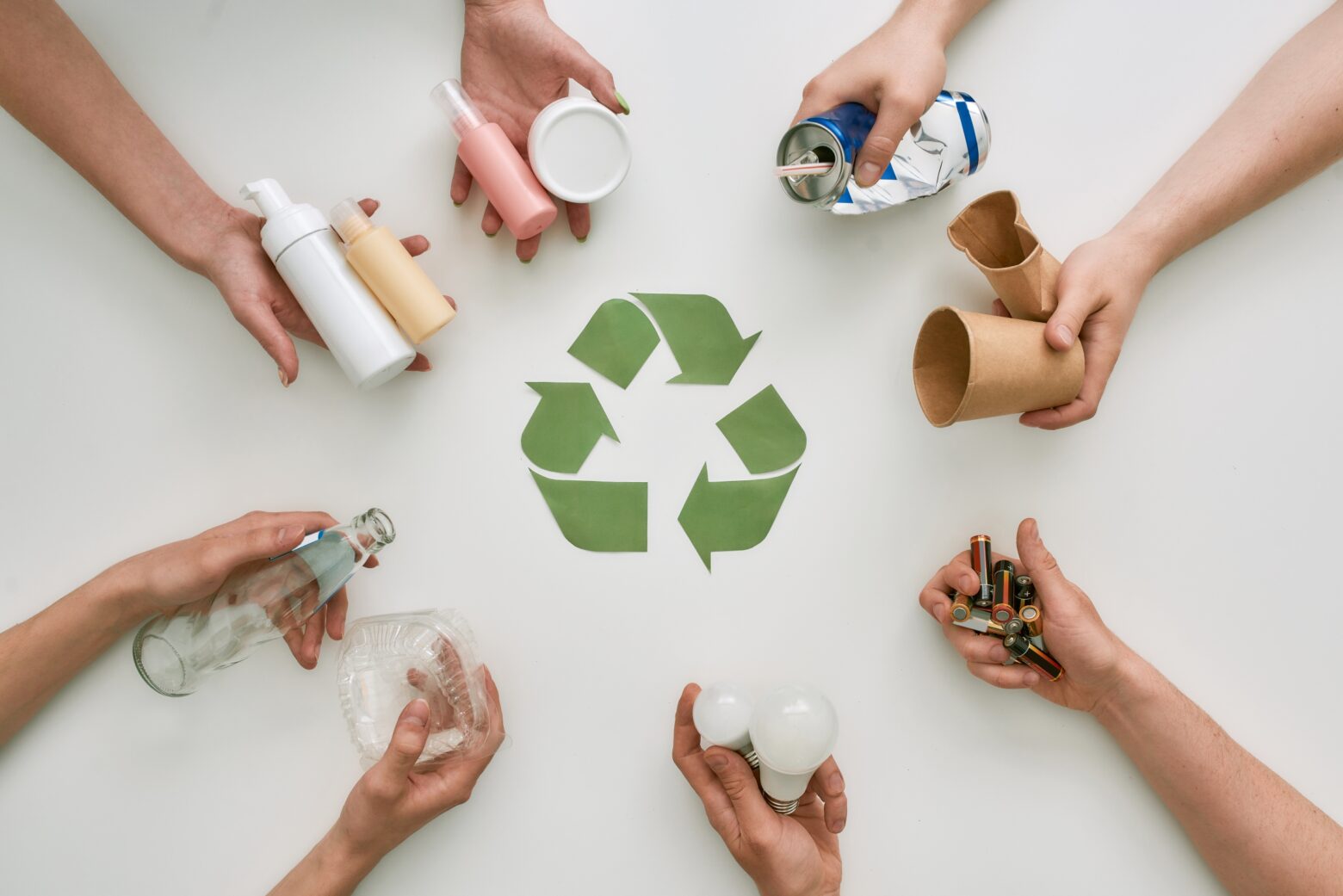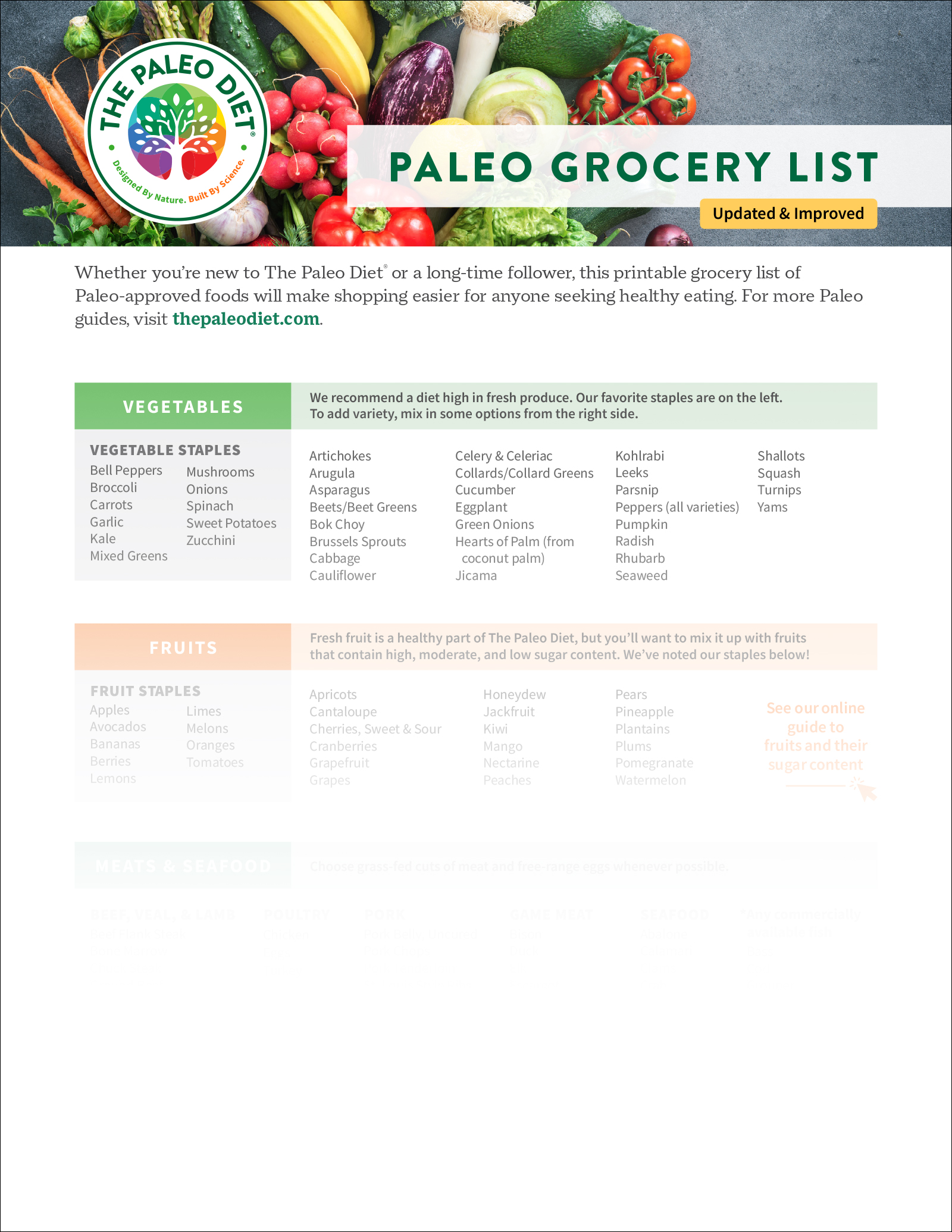Become a Recycling Expert with This Recycling Guide

Many of us are already aware of the benefits of recycling. Global waste is expected to grow in the coming decades, which could lead to contaminated ecosystems and exponentially rising costs to manage it.1,2 In the United States, hundreds of millions of tons of solid waste goes into landfills every year.3 With recycling programs, the amount of landfill waste is not only reduced, but potential carbon dioxide emissions in the air are also lowered.
Unfortunately, not everything can be recycled, and even recyclable materials will end up in the landfill anyway if they are not disposed of properly. On top of that, wishcycling can further complicate the recycling process by contaminating recyclables or even damaging machinery.
Wishcycling is the aspirational idea that non-recyclable items can be sent to a recycling center and will be recycled anyway.4 Certain plastics, old clothes, and even broken umbrellas have found their way into recycling centers that have no means of repurposing them. When we understand the sometimes-complicated process of what can and can’t be recycled, we can not only make the process more efficient, but also evaluate our own habits around waste and take steps to reduce the need to recycle in the first place.
Before we jump into the general rules of recycling, it’s important to note that exactly what materials and how they are recycled depend on your municipality and even your living situation—for instance, you may live in a place with an HOA that chooses not to participate in a recycling program. Always check with your local waste management to see what materials you can recycle from home (or drop off at a recycling facility).
Things That Are Usually Recyclable
Curbside recycling programs often recycle one or all of the following materials, but there’s caveats to each item. You should also be aware of whether your curbside program allows for single-stream recycling (i.e., all materials are disposed of together) or if items should be sorted by material. If you are unable to participate in curbside recycling, these items are often able to be dropped off at recycling facilities, but may incur a fee.
Paper Products
Corrugated boxes and paper products are the most recycled materials in the U.S., followed by metals.3 Paper products can include:5
- Cardboard boxes
- Printer paper
- Newspaper
- Magazines and catalogues
- Envelopes
- Paper-padded mailers (not padded with bubble wrap)
- Paper containers and packaging
- Egg, milk, and juice cartons
There are a few important rules to remember for recycling paper products. First, they should never be soiled with food residue or liquids. That means greasy pizza boxes, used paper towels, or soaking wet paper should go in the trash. If you have liquid cartons that are recyclable, ensure they’re empty, don’t flatten them (it helps ensure the workers can identify them when sorting), and screw the cap on if it has one. Small pieces of paper will likely get lost on the way to the facility—including shredded paper if it’s not contained within a box. As a good rule of etiquette, cardboard boxes should always be broken down to save space.
Metals
There are several common metals that are usually recyclable:6
- Aluminum (drink cans, cooking pots, food packaging, etc.)
- Brass (electrical terminals, locks, etc.)
- Copper (wires, cookware, plumbing, etc.)
- Lead (pipes, gutters, ammunition, etc.)
- Steel (rods, wires, pipes, etc.)
Most municipalities will only accept aluminum and steel cans in their curbside recycling programs, but if you have a decent amount of brass, copper, or lead, you can check to see if your facility or a scrap yard will accept them.
Technically, gold and silver are also recyclable materials, but as they are more valuable, you may want to save your silverware and fine jewelry for an appraiser or pawn shop. Other household items like electrical connectors, computers, and silver-cadmium or silver-zinc batteries may contain some gold or silver, but are typically items that you wouldn’t recycle curbside.
Plastics
Unlike metals, many plastics display numbers to determine their composite materials, and therefore, how they can be recycled.
- Most curbside programs are able to recycle plastics numbered 1 and 2.
- Plastics numbered 3, 5, and 7 are usually not recyclable curbside, but may be taken by drop-off at your local facility.
- Plastics numbered 4 (low-density polyethylene) and 6 (polystyrene AKA Styrofoam) are usually trashed.
Yes, unfortunately those Styrofoam cups and packaging cannot be put in the recycle bin. The same with plastic bags, bubble wrap, and cling film (often plastic #4). For a more in-depth look at the types of plastics and their corresponding numbers, see our Plastic Recycling Guide.
Glass
The beauty of recycling glass is that it can (theoretically) be processed and reformed an infinite number of times.7 Compare to paper products, which have shorter fibers every time they’re broken down and lose quality with each processing.8 (Though it’s not common practice to make bottles out of 100% recycled material, manufacturer O-I Glass has several plants in Europe that use 90% recycled glass on average in their new bottles.)
However, that doesn’t mean all glass is created equal. Several types are treated with chemicals that can make new glass unstable during the melting process, including:8
- Windows
- Mirrors
- Dishes
- Pottery
Broken glass can harm workers at the facility and also should not be recycled. Intact jars, bottles, and clear glass containers that are rinsed of residue and have plastic or metal lids removed should be acceptable.9 You can also donate glassware that is in good condition so others can reuse it without it needing to be remade.
Extras
Sometimes our recyclables come with little “extras” that throw their ability to be repurposed into question. And like most of the materials we cover here, the answer is: It depends.
Items like staples, glue, and tape are usually able to be sorted out in the process.4 But paper envelopes with plastic windows are better off being separated, with the latter material thrown in the trash. When in doubt, separate if you can, or throw it out if you can’t.
Things That Usually Can’t Be Recycled
There are many items consumers hope can be recycled through their residential program that end up in the landfill anyway, but it mostly boils down to two main categories: items spoiled by food residue and mixed materials.
Food Residue
This is often what can make a recyclable product non-recyclable—like the greasy pizza boxes mentioned above. Food residue has the potential to contaminate an entire batch of recyclable materials, which is why most paper, plastic, and glass recycling programs require containers to be rinsed clean and empty.
Food waste and paper products can be compostable, but it is not the same process as being recyclable.
Mixed Materials
Generally, if an item has various materials that make up the whole, it’s not recyclable. Think aerosol cans, waxed paper, diapers, plastic toys, or aluminum-lined plastic products.8 The materials are difficult or not cost-effective to separate, so they are trashed. Materials contaminated with hazardous chemicals (like bleach, motor oil, or antifreeze) or medical waste are not only hard to separate, but harmful to the workers who sort through the items, and thus should also be trashed or taken to a hazardous waste facility.
Specialty Recyclables
Though residential recycling programs are the most convenient for people, there are other items that can still be recycled even if a curbside program won’t take them. These are sometimes known as “hard to recycle” items or specialty recycling.
Electronics & Batteries
Many parts of electronic materials can be salvaged and recycled, but not everyone knows where to take their e-waste. Some communities will hold electronic recycling days, and stores like Best Buy and Staples will take electronics in person or by mail and even offer rewards for certain products.
Several companies will purchase old electronics—but don’t expect to make much of a side hustle out of it. The payout for used electronics is much lower than what the devices cost new.
Common batteries like alkaline can be placed in household trash, but many types should be recycled or given to a hazardous waste facility. Sometimes batteries are accepted with other e-waste, but every program will be different. The EPA has tips for disposing of batteries properly, and Call2Recycle provides drop-off locations and mail-in kits for recycling most types of batteries.
Paint
Leftover paint can be mixed in with a new paint color or simply reused in the local community. PaintCare has a database of partnered retailers and hazardous waste facilities in the U.S. that can either dispose of your paint properly or repurpose in a reuse program. They accept many types of paints (latex, acrylic, water- and oil-based, enamel, etc.), primers, sealers, stains, varnishes, and coatings within a select number of states.
Furniture
While it’s true most furniture cannot easily be recycled, it can still be repurposed by donating to a thrift store or local used furniture company that can treat or reupholster old pieces for resale. Habitat for Humanity ReStores accept gently used furniture, appliances, and other home improvement items, and most will pick up for free.
Mattresses may be accepted at a recycling facility, local mattress recycling program, or taken back by the manufacturer. You can use Recycle Nation’s search tool to find facilities and programs in your area for any type of hard-to-recycle material—mattresses included.
Recycling Best Practices
The old mantra of “reduce, reuse, recycle” isn’t just advice on how to live more sustainably—it’s an order of preference! When we reduce our overall waste, we contribute less to landfills, and when we’re unable to reduce, we should reuse where we can. Recycling should be the last step.
If you’re not sure where to start, see our 8 Achievable Low-Waste Tips, or make the following simple swaps the next time you go grocery shopping to reduce the amount of single-use plastic needed:
- Bring reusable cloth bags that aren’t lined with plastic, or ask for paper bags when checking out.
- Use mesh produce bags instead of the thin, plastic bags from dispensers.
- Buy fruits and vegetables whole and prep them at home instead of pre-sliced in plastic containers.
When it is time to recycle something, always make sure your curbside program or drop-off facility can take the items. And aim to only recycle items larger than the palm of your hand—anything smaller may not make it to the facility or fall through the machinery and either get stuck or end up in the landfill anyway.
When in doubt, throw it out—but also remember you have resources at your fingertips (like search tools from Earth911, Recycle Nation, or Green Citizen) to discover the programs that exist in your area. Terracycle also has numerous free collection programs for recycling food packaging, beauty products, appliances, and much more. Organizations like Pact Collective are also available for recycling specific categories of items. If you’re raising future recyclers, have them test their knowledge with this game from Western Disposal Services, or use it to help teach them better recycling habits.
Remember, the first step should be reducing wasteful items in the first place, but when we’re able to recycle something over sending it to a landfill, we’ll all be better for it.
References
- The World Bank. (2018, September 20). Global Waste to Grow by 70 Percent by 2050 Unless Urgent Action is Taken: World Bank Report. World Bank; World Bank. https://www.worldbank.org/en/news/press-release/2018/09/20/global-waste-to-grow-by-70-percent-by-2050-unless-urgent-action-is-taken-world-bank-report
- UNEP. (2024, February 28). Global Waste Management Outlook 2024. UNEP – UN Environment Programme. https://www.unep.org/resources/global-waste-management-outlook-2024
- United States Environmental Protection Agency. (2024, November 8). National Overview: Facts and Figures on Materials, Wastes and Recycling | US EPA. United States Environmental Protection Agency; United States Environmental Protection Agency. https://www.epa.gov/facts-and-figures-about-materials-waste-and-recycling/national-overview-facts-and-figures-materials
- Stop Wishcycling — It Is Detrimental to the Recycling Process. (n.d.). Green Matters. https://www.greenmatters.com/p/wishcycling
- What’s Recyclable? | American Forest and Paper Association. (n.d.). Www.afandpa.org. https://www.afandpa.org/priorities/recycling/whats-recyclable
- Recycleview. (2016, November). 7 Most Common Types of Metal for Recycling. Recycling View. https://www.recyclingview.com/types-metal-recycling/
- Haggard, L. (2021, April 22). Glass can be recycled infinitely. Here’s how it works in Colorado’s “closed loop.” The Colorado Sun; The Colorado Sun. https://coloradosun.com/2021/04/22/glass-recycling-infinite-colorado-closed-loop/
- Vrachovska, M. (n.d.). 28 Things That Cannot Be Recycled. Almost Zero Waste. https://www.almostzerowaste.com/things-you-cant-recycle/
- https://www.facebook.com/Treehugger. (2023, April 6). How to Recycle Glass Correctly. Treehugger. https://www.treehugger.com/how-to-recycle-glass-correctly-5185806
Andrea Dehnke
Andrea is the Content Manager at The Paleo Diet and has experience working with several health and nutrition publications.
More About The Author




